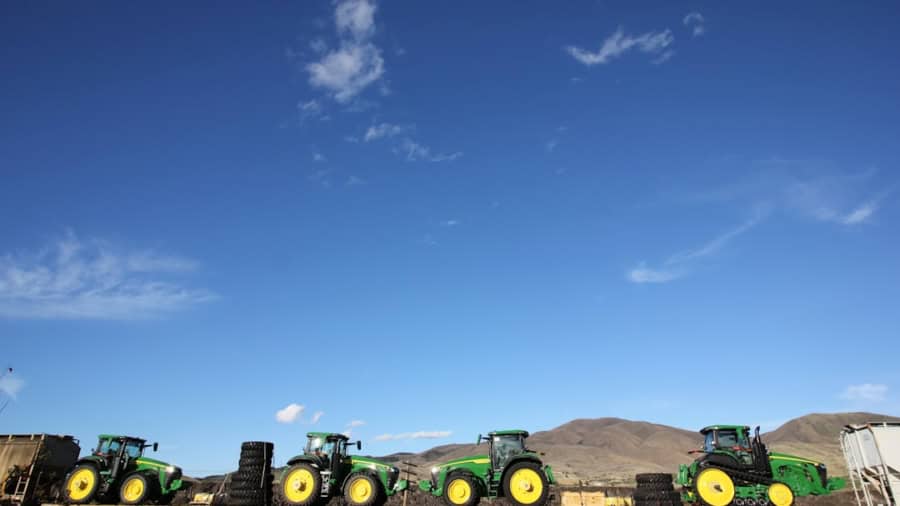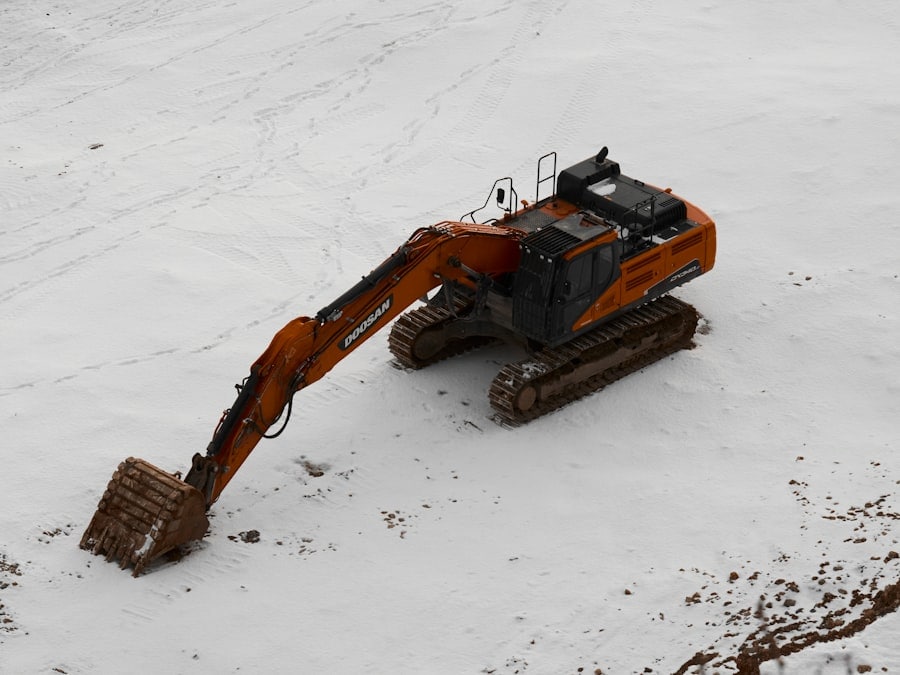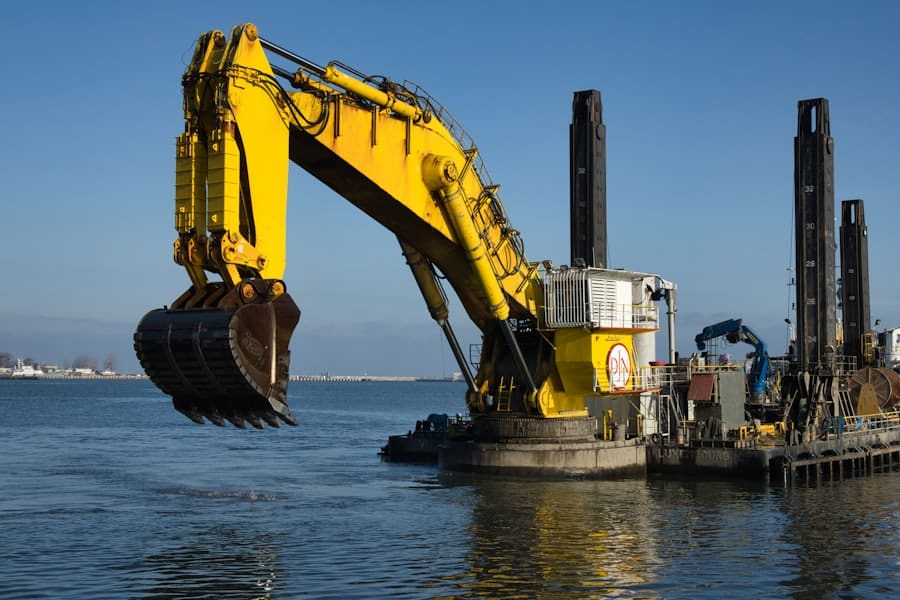The mining industry has long been a cornerstone of economic development, providing essential raw materials for various sectors, including construction, manufacturing, and energy. However, the traditional methods of mining have often been labor-intensive, hazardous, and environmentally detrimental. In recent years, the integration of robotics into mining operations has emerged as a transformative force, promising to enhance efficiency, safety, and sustainability.
The adoption of robotics in mining is not merely a trend; it represents a fundamental shift in operational paradigms. As the demand for minerals and metals continues to rise globally, mining companies are increasingly turning to advanced technologies to meet these challenges.
Robotics offers solutions that can mitigate the risks associated with human labor in hazardous environments while optimizing resource extraction processes. This article delves into the multifaceted role of robotics in the mining industry, exploring its advantages, applications, safety implications, and future trends.
Key Takeaways
- Robotics in the mining industry involves the use of automated machines and systems to perform tasks traditionally done by humans.
- Advantages of robotics in mining include increased safety, efficiency, and productivity, as well as the ability to access and operate in hazardous or remote environments.
- Automation in mining processes involves the use of robotics for tasks such as drilling, blasting, hauling, and processing of materials.
- Robotics in mining contributes to safety by reducing the exposure of workers to hazardous conditions and minimizing the risk of accidents.
- The impact of robotics on efficiency and productivity in mining is significant, as it allows for continuous operation, precise control, and the ability to work in challenging conditions.
Advantages of Robotics in Mining
One of the most significant advantages of robotics in mining is the enhancement of operational efficiency. Automated systems can perform repetitive tasks with precision and speed that far exceed human capabilities. For instance, robotic drills can operate continuously without fatigue, allowing for more consistent and efficient drilling operations.
This not only accelerates the extraction process but also reduces downtime associated with human labor shifts. Moreover, robotics can be programmed to optimize drilling patterns and minimize waste, leading to more effective resource utilization. In addition to efficiency gains, robotics also contributes to cost reduction in mining operations.
By automating tasks such as ore sorting and material handling, companies can significantly lower labor costs and reduce the likelihood of human error. For example, autonomous haul trucks equipped with advanced sensors and navigation systems can transport materials across mining sites without the need for human drivers. This not only cuts labor expenses but also enhances safety by removing personnel from potentially dangerous environments.
The cumulative effect of these advantages positions robotics as a key driver of profitability in an industry often characterized by fluctuating commodity prices.
Automation in Mining Processes
Automation in mining processes encompasses a wide array of applications that streamline operations from exploration to extraction. One notable example is the use of autonomous drilling systems that can operate independently in remote locations. These systems utilize advanced algorithms and real-time data analysis to make decisions about drilling parameters, ensuring optimal performance while minimizing human intervention.
This level of automation not only increases productivity but also allows for more precise targeting of mineral deposits. Furthermore, automation extends to the monitoring and management of mining operations. Drones equipped with high-resolution cameras and sensors are increasingly being deployed for aerial surveys and inspections.
These unmanned aerial vehicles (UAVs) can quickly gather data on site conditions, monitor stockpiles, and assess environmental impacts without putting personnel at risk. The integration of drones into mining operations exemplifies how automation can enhance situational awareness and facilitate informed decision-making.
Robotics and Safety in the Mining Industry
Safety is a paramount concern in the mining industry, where workers are often exposed to hazardous conditions such as toxic gases, cave-ins, and heavy machinery accidents. The introduction of robotics has the potential to significantly improve safety outcomes by reducing human exposure to these dangers. For instance, robotic systems can be deployed in underground mines to conduct inspections and perform maintenance tasks in areas that are too risky for human workers.
This not only protects personnel but also ensures that equipment is maintained to prevent accidents. Moreover, robotics can enhance emergency response capabilities in mining operations. In the event of an incident such as a cave-in or gas leak, robotic systems can be utilized to assess the situation and provide real-time data to emergency responders.
For example, ground-penetrating radar-equipped robots can help locate trapped individuals or assess structural integrity without endangering human lives. By leveraging robotics for safety-critical tasks, mining companies can create a safer working environment while maintaining operational continuity.
Impact of Robotics on Efficiency and Productivity
The impact of robotics on efficiency and productivity in mining is profound and multifaceted. Automated systems can operate around the clock without breaks or fatigue, leading to increased output levels compared to traditional methods reliant on human labor. For instance, autonomous haul trucks can transport materials continuously across vast mining sites, significantly reducing cycle times and increasing throughput.
This capability allows companies to maximize their resource extraction efforts while minimizing operational costs. Additionally, robotics facilitates data-driven decision-making that enhances overall productivity. Advanced analytics and machine learning algorithms can analyze vast amounts of data generated by robotic systems to identify patterns and optimize processes.
For example, predictive maintenance powered by AI can forecast equipment failures before they occur, allowing for timely interventions that prevent costly downtime. By harnessing the power of data analytics alongside robotics, mining companies can achieve unprecedented levels of operational efficiency.
Challenges and Limitations of Robotics in Mining
Despite the numerous advantages that robotics brings to the mining industry, several challenges and limitations must be addressed for widespread adoption. One significant hurdle is the high initial investment required for implementing robotic systems. The cost of acquiring advanced machinery, sensors, and software can be prohibitive for smaller mining operations or those operating on tight margins.
Additionally, ongoing maintenance and upgrades further contribute to the financial burden associated with automation. Another challenge lies in the integration of robotics with existing mining infrastructure and workflows. Many mining operations have established processes that may not easily accommodate new technologies.
Transitioning to automated systems requires careful planning and training to ensure that personnel are equipped with the necessary skills to operate and maintain these advanced tools. Resistance to change among workers accustomed to traditional methods can also pose a barrier to successful implementation.
Future Trends in Robotics for Mining
The future of robotics in mining is poised for significant advancements driven by technological innovation and evolving industry needs. One emerging trend is the increasing use of artificial intelligence (AI) in conjunction with robotics. AI algorithms can enhance the capabilities of robotic systems by enabling them to learn from their environment and adapt their behavior accordingly.
This could lead to more autonomous operations where robots make real-time decisions based on changing conditions on-site. Another trend is the growing emphasis on sustainability within the mining sector. As environmental concerns become more pressing, robotics will play a crucial role in minimizing ecological impacts through more efficient resource extraction methods and waste management practices.
For instance, robotic systems designed for precision mining can reduce overburden removal and limit habitat disruption compared to traditional techniques. The integration of robotics with renewable energy sources also holds promise for creating more sustainable mining operations.
Case Studies of Successful Implementation of Robotics in Mining
Several case studies illustrate the successful implementation of robotics in mining operations around the world. One notable example is Rio Tinto’s use of autonomous haul trucks at its Pilbara iron ore mines in Australia. The company has deployed a fleet of driverless trucks that transport ore from mines to processing facilities without human intervention.
This initiative has resulted in increased productivity and reduced operational costs while enhancing safety by minimizing human presence in hazardous areas. Another compelling case is Barrick Gold’s use of robotic drilling technology at its Goldstrike mine in Nevada. The company has implemented automated drilling rigs that operate with high precision and efficiency, significantly improving ore recovery rates while reducing costs associated with manual drilling operations.
By leveraging advanced robotics, Barrick Gold has positioned itself as a leader in innovation within the mining sector. These case studies exemplify how robotics is reshaping the landscape of mining operations, driving improvements in efficiency, safety, and sustainability while addressing some of the industry’s most pressing challenges. As technology continues to evolve, it is likely that more companies will follow suit, further integrating robotics into their operations for enhanced performance and competitiveness in an increasingly demanding market.
A related article to How Robotics Transforms the Mining Industry Through Automation is “Discover the Best Software for Logo Design Today” which discusses the latest tools and technologies available for creating professional logos. This article can provide valuable insights into the innovative software solutions that are revolutionizing the design industry. To learn more about logo design software, check out this article.
FAQs
What is robotics in the mining industry?
Robotics in the mining industry refers to the use of automated machines and systems to perform tasks traditionally carried out by human workers. These robots are designed to operate in harsh and hazardous environments, increasing efficiency and safety in mining operations.
How does robotics transform the mining industry?
Robotics transforms the mining industry by automating various processes such as drilling, blasting, hauling, and transportation. This automation improves productivity, reduces operational costs, and enhances safety by minimizing the exposure of human workers to dangerous conditions.
What are the benefits of robotics in the mining industry?
The benefits of robotics in the mining industry include increased efficiency, reduced operational costs, improved safety for workers, and the ability to access and extract resources from previously inaccessible or dangerous areas.
What are some examples of robotics used in the mining industry?
Examples of robotics used in the mining industry include autonomous haul trucks, robotic drilling systems, unmanned aerial vehicles (drones) for surveying and mapping, and remotely operated machinery for underground mining operations.
What are the challenges of implementing robotics in the mining industry?
Challenges of implementing robotics in the mining industry include the high initial investment costs, the need for specialized training for workers to operate and maintain robotic systems, and the potential impact on employment in the industry. Additionally, the integration of robotics with existing mining infrastructure and processes can be complex.



